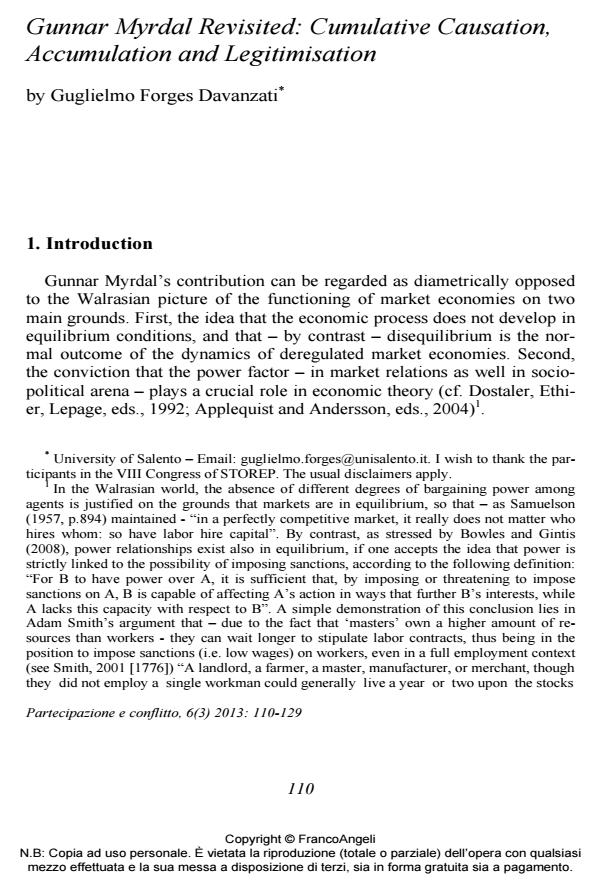Gunnar Myrdal Revisited: Cumulative Causation, Accumulation and Legitimisation
Titolo Rivista PARTECIPAZIONE E CONFLITTO
Autori/Curatori Guglielmo Forges Davanzati
Anno di pubblicazione 2013 Fascicolo 2013/3
Lingua Italiano Numero pagine 20 P. 110-129 Dimensione file 439 KB
DOI 10.3280/PACO2013-003006
Il DOI è il codice a barre della proprietà intellettuale: per saperne di più
clicca qui
Qui sotto puoi vedere in anteprima la prima pagina di questo articolo.
Se questo articolo ti interessa, lo puoi acquistare (e scaricare in formato pdf) seguendo le facili indicazioni per acquistare il download credit. Acquista Download Credits per scaricare questo Articolo in formato PDF

FrancoAngeli è membro della Publishers International Linking Association, Inc (PILA)associazione indipendente e non profit per facilitare (attraverso i servizi tecnologici implementati da CrossRef.org) l’accesso degli studiosi ai contenuti digitali nelle pubblicazioni professionali e scientifiche
The aim of this paper is to provide a reconstruction of Myrdal’s analysis of the factors determining the path of accumulation, in view of the pivotal role played by political institutions in promoting it. It will be shown that Myrdal’s theory of cumulative causation, combined with his idea that consensus on the existing social order is a "created harmon"”, is a powerful analytical tool in understanding a key contradiction of capitalist reproduction (particularly in a neo-liberal regime): namely the trade-off between accumulation and legitimisation.
Parole chiave:Gunnar Myrdal, accumulation, welfare state, political institutions
Jel codes:B25, H11, E25
- Perspectives and Trends in Education and Technology Cândido Gomes, Cristina Costa-Lobo, Dulce Noronha-Sousa, Enrique Vázquez-Justo, Eusebio Costa, Susana Sá, pp.945 (ISBN:978-981-16-5062-8)
Guglielmo Forges Davanzati, Gunnar Myrdal Revisited: Cumulative Causation, Accumulation and Legitimisation in "PARTECIPAZIONE E CONFLITTO" 3/2013, pp 110-129, DOI: 10.3280/PACO2013-003006